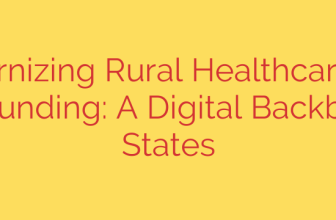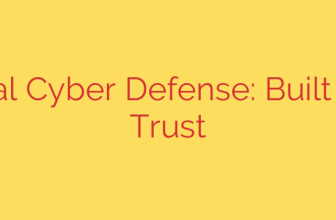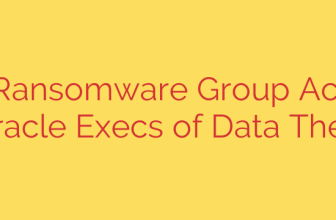
Powering the Future: A Guide to the Best Free and Open Source Robotics Software for Linux
The world of robotics is expanding at an incredible pace, moving from industrial automation to consumer electronics, healthcare, and exploration. At the heart of this revolution lies powerful, flexible software. For developers, hobbyists, and researchers, the combination of the Linux operating system and open-source software provides an unparalleled platform for building the next generation of intelligent machines.
Linux offers stability, control, and a rich development environment, making it the preferred choice for serious robotics projects. When paired with free and open-source software, it dramatically lowers the barrier to entry, allowing anyone with a passion for robotics to start creating. This guide explores the most essential and influential open-source tools that can help you design, simulate, and deploy sophisticated robotic systems.
1. Robot Operating System (ROS)
Despite its name, ROS is not a traditional operating system. Instead, it’s a flexible and powerful framework for writing robot software. It provides a collection of libraries, tools, and conventions aimed at simplifying the task of creating complex and robust robot behavior across a wide variety of platforms.
ROS has become the de facto standard in robotics research and is rapidly gaining traction in commercial applications. It operates on a publish-subscribe model, where different processes (nodes) can communicate with each other seamlessly, whether they are running on the same machine or across a network.
Key Features:
- Modular, message-passing architecture for building scalable systems.
- Hardware abstraction, allowing code to be reused on different robots.
- Massive library of third-party packages for everything from navigation to manipulation and computer vision.
- Powerful visualization and debugging tools like RViz and RQT.
2. Gazebo
Before deploying code on expensive physical hardware, you need to test it rigorously. Gazebo is a state-of-the-art 3D robotics simulator that allows you to accurately and efficiently test your algorithms in complex indoor and outdoor environments.
Gazebo stands out for its high-fidelity physics engine, which can simulate dynamics, friction, and collisions with remarkable accuracy. It also offers a wide range of sensor models, including cameras, LIDAR, IMUs, and GPS. Crucially, Gazebo integrates tightly with ROS, allowing for a seamless transition from simulation to a physical robot.
Key Features:
- Realistic rendering of environments with advanced lighting and textures.
- A robust physics engine for simulating complex interactions.
- Extensive library of pre-built robot models, such as the PR2, TurtleBot, and various robotic arms.
- Plugin-based architecture for adding new sensors, models, and interfaces.
3. OpenCV (Open Source Computer Vision Library)
A robot is only as smart as its ability to perceive the world. OpenCV is the premier open-source library for computer vision and machine learning. It provides thousands of optimized algorithms for real-time image and video processing, making it an indispensable tool for any robot that needs to “see.”
From simple object detection to complex facial recognition and 3D environment reconstruction, OpenCV provides the building blocks for robotic perception. It supports a wide range of programming languages, including C++, Python, and Java, and is highly optimized for performance on various hardware platforms.
Key Features:
- Comprehensive collection of algorithms for object detection, feature matching, and image filtering.
- Modules for machine learning and deep learning integration (e.g., with TensorFlow and PyTorch).
- Cross-platform compatibility and hardware acceleration support.
- Active development and a massive global community.
4. MRPT (Mobile Robot Programming Toolkit)
For projects focused on mobile robotics, the Mobile Robot Programming Toolkit (MRPT) is an excellent choice. It is a cross-platform, open-source C++ library containing a collection of algorithms for solving common problems in mobile robotics.
MRPT is particularly strong in the areas of Simultaneous Localization and Mapping (SLAM), computer vision, and motion planning. It provides developers with the tools needed to enable a robot to autonomously navigate and map its environment.
Key Features:
- Robust implementations of various SLAM algorithms, including ICP and Kalman filters.
- Tools for 3D point cloud processing and visualization.
- Ready-to-use applications for robotic mapping and localization.
5. YARP (Yet Another Robot Platform)
YARP is a middleware designed to connect sensors, processors, and actuators in a modular way. Developed with humanoid robotics in mind, it excels at managing a large number of distributed components and facilitating real-time communication between them.
The core philosophy of YARP is that a robot’s software architecture should be as flexible and reconfigurable as its hardware. It allows developers to create software modules that can be easily connected, disconnected, and reconfigured at runtime, making it ideal for complex and evolving robotic systems.
Key Features:
- Connects modules written in different languages (C++, Python, Java, etc.).
- Lightweight design with low communication overhead.
- Excellent support for computer vision modules and data streaming.
How to Choose the Right Software for Your Project
Selecting the right tool depends entirely on your goals.
- For comprehensive projects: Start with ROS. Its vast ecosystem and community support make it the best all-around choice for building complex robots.
- For realistic testing: Gazebo is your go-to simulator. Its tight integration with ROS makes it an essential part of the development workflow.
- For robotic perception: OpenCV is non-negotiable. Its powerful computer vision capabilities are critical for enabling robots to interact intelligently with their surroundings.
- For specialized tasks: If your focus is primarily on mobile navigation and mapping, MRPT offers a powerful, targeted set of tools that can accelerate development.
A Note on Security in Open-Source Robotics
As robots become more connected, security becomes a critical concern. When working with open-source robotics software, it’s essential to follow best practices to protect your systems.
- Secure Your Network: Robots are essentially IoT devices. Ensure the network they operate on is secure, using firewalls and encrypted communication protocols (like WPA2/3 for Wi-Fi).
- Validate Packages: The strength of open-source is its community, but always vet third-party packages before integrating them. Use official repositories and review the code for potential vulnerabilities.
- Implement Access Control: Do not leave your robot’s control interfaces open. Implement strong authentication and authorization to ensure only trusted users and systems can issue commands.
- Keep Software Updated: Regularly update your operating system, ROS distribution, and all other software packages to patch known security vulnerabilities.
By leveraging these powerful, free, and open-source tools on a stable Linux foundation, you can unlock incredible potential in the field of robotics. The community-driven nature of this software ensures continuous innovation, providing you with the resources needed to build smarter, more capable, and more accessible robots for the future.
Source: https://www.linuxlinks.com/robotics/








